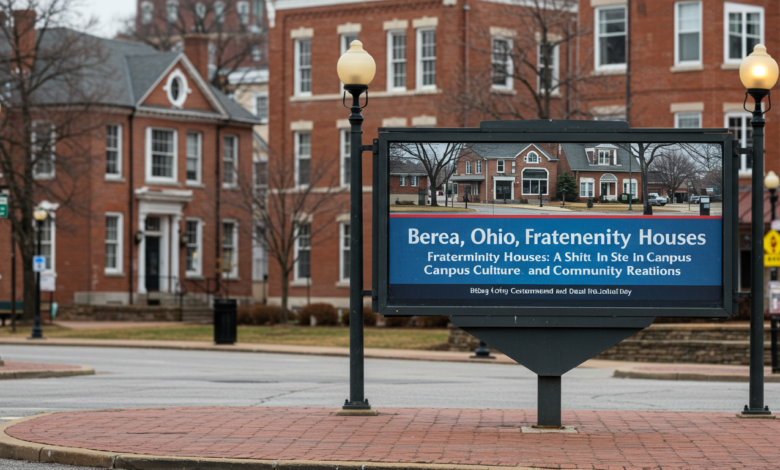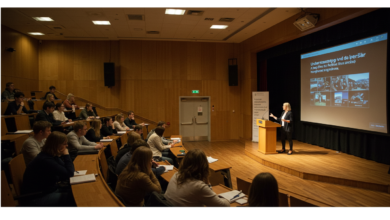Berea Ohio Bans Fraternity Houses: A Shift in Campus Culture and Community Relations

Berea, Ohio, home to Baldwin Wallace University, has recently drawn attention for its decision to ban fraternity houses. This move has sparked debates among students, university officials, and local residents, raising important questions about student safety, campus culture, and the role of Greek life in higher education. This article explores the historical context, reasons for the ban, its impact, legal considerations, and the broader implications for fraternity culture in the United States.
Historical Context of Fraternity Houses in Berea
Fraternities have been a staple of American college life since the late 18th century. They originally functioned as secret societies where students engaged in intellectual discussions and debates outside the traditional classroom setting. Over time, these organizations evolved into prominent social groups that played a significant role in shaping college experiences.
At Baldwin Wallace University, fraternities have long been part of student life. Greek organizations have provided students with leadership opportunities, social networks, and community service projects. However, as with many college towns across the country, the presence of fraternity houses has occasionally led to tensions between students and local residents due to concerns over noise, partying, and safety issues.
Why Did Berea Ban Fraternity Houses?
The decision to ban fraternity houses in Berea was driven by a combination of factors, including safety concerns, noise complaints, and the desire to create a more inclusive campus environment.
1. Concerns Over Student Safety
One of the primary motivations for the ban was ensuring student safety. Nationwide, fraternity houses have been associated with incidents of hazing, alcohol-related injuries, and misconduct. While not all fraternities engage in dangerous activities, the risks associated with unsupervised, off-campus fraternity houses have raised red flags for university administrators and city officials.
2. Complaints from Local Residents
Fraternity houses often function as social hubs, hosting parties and gatherings that can lead to disturbances in residential neighborhoods. Berea residents had expressed ongoing concerns about noise, late-night disruptions, and property damage related to fraternity activities. By implementing the ban, the city sought to address these complaints and improve the quality of life for non-student residents.
3. University and Community Relations
Baldwin Wallace University has worked closely with the city of Berea to foster positive relationships between students and the broader community. The ban on fraternity houses aligns with efforts to create a more harmonious living environment while still allowing Greek organizations to operate in a way that prioritizes student development over social events.
Student and Community Reactions
Support for the Ban
Some students, faculty members, and community members support the ban, arguing that it promotes a safer and more responsible campus culture. They believe that eliminating fraternity houses reduces the risks of hazing, underage drinking, and other potentially harmful behaviors. Additionally, it encourages fraternities to focus on leadership, service, and academic excellence rather than partying.
Opposition to the Ban
However, not everyone agrees with the decision. Many fraternity members and alumni argue that fraternity houses are essential to maintaining traditions, fostering brotherhood, and providing a unique college experience. They contend that responsible fraternity members are being unfairly punished for the actions of a few bad actors.
Some critics also view the ban as an infringement on students’ rights to free association, arguing that the city and university should focus on regulating behavior rather than outright prohibiting fraternity houses.
Also Read: Understanding Iversær: A Deep Dive into Its Meaning and Significance
Implications for Student Life
The ban has led to significant changes in how fraternities operate at Baldwin Wallace University. Without designated fraternity houses, Greek organizations must find alternative spaces for meetings, events, and recruitment. This shift has prompted several key developments:
- Increased University Oversight: Fraternities now rely more on campus facilities for events, allowing the university to monitor activities more closely and enforce policies.
- A Shift Toward Community Service and Leadership: Without fraternity houses, Greek organizations have placed greater emphasis on leadership training, philanthropy, and academic achievement.
- Changes in Social Life: Some students feel that the ban has negatively impacted campus social life, as fraternity houses traditionally served as gathering places for students. Others argue that the change has led to a more diverse and inclusive social scene.
Legal and Regulatory Considerations
The ban has also raised legal questions. Some fraternity members and alumni considered challenging the decision on the grounds that it violates their rights to free association. However, the city of Berea and Baldwin Wallace University maintain that they are within their rights to regulate land use and student housing to ensure public safety.
Similar debates have occurred in other college towns across the country. Many universities have implemented stricter policies on Greek life, including bans on fraternity houses, mandatory anti-hazing training, and alcohol restrictions. Berea’s decision reflects a broader trend of increasing scrutiny of fraternity culture and its impact on student well-being.
Broader Implications for Greek Life in the U.S.
The ban on fraternity houses in Berea is part of a larger national conversation about the future of Greek life on college campuses. In recent years, universities have faced mounting pressure to reform fraternity culture due to high-profile incidents of hazing, sexual assault, and substance abuse.
Some institutions have gone as far as banning Greek life altogether, while others have implemented policies to encourage positive reforms. The Berea decision suggests that universities and cities are increasingly willing to take strong action to address concerns about student safety and community relations.
The Future of Fraternities in Berea and Beyond
While fraternity houses are no longer permitted in Berea, Greek organizations at Baldwin Wallace University continue to operate. Many fraternities have adapted to the change by focusing on community service, academic excellence, and leadership development.
Looking ahead, the future of Greek life in Berea and across the U.S. will likely depend on how fraternities evolve to meet the expectations of modern college communities. Key areas of focus may include:
- Stronger Risk Management Policies: Implementing stricter rules to prevent hazing, alcohol abuse, and misconduct.
- Greater Inclusivity: Expanding membership opportunities to create a more diverse and welcoming environment.
- A Shift Away from Social Focus: Encouraging fraternities to emphasize networking, professional development, and civic engagement.
Conclusion
Berea, Ohio’s decision to ban fraternity houses represents a significant shift in campus culture and student life. While the move has sparked debate, it ultimately reflects a broader effort to prioritize student safety, improve community relations, and adapt Greek life to modern values.
Also Read: Bruce Wilpon Wife: A Look Into His Personal Life, Relationships, and Influence
As universities across the country continue to grapple with the challenges and benefits of Greek organizations, the Berea case serves as a compelling example of how institutions and cities can work together to balance tradition with the evolving needs of students and communities. Whether this trend continues nationwide remains to be seen, but one thing is clear: the conversation about fraternity culture is far from over.


